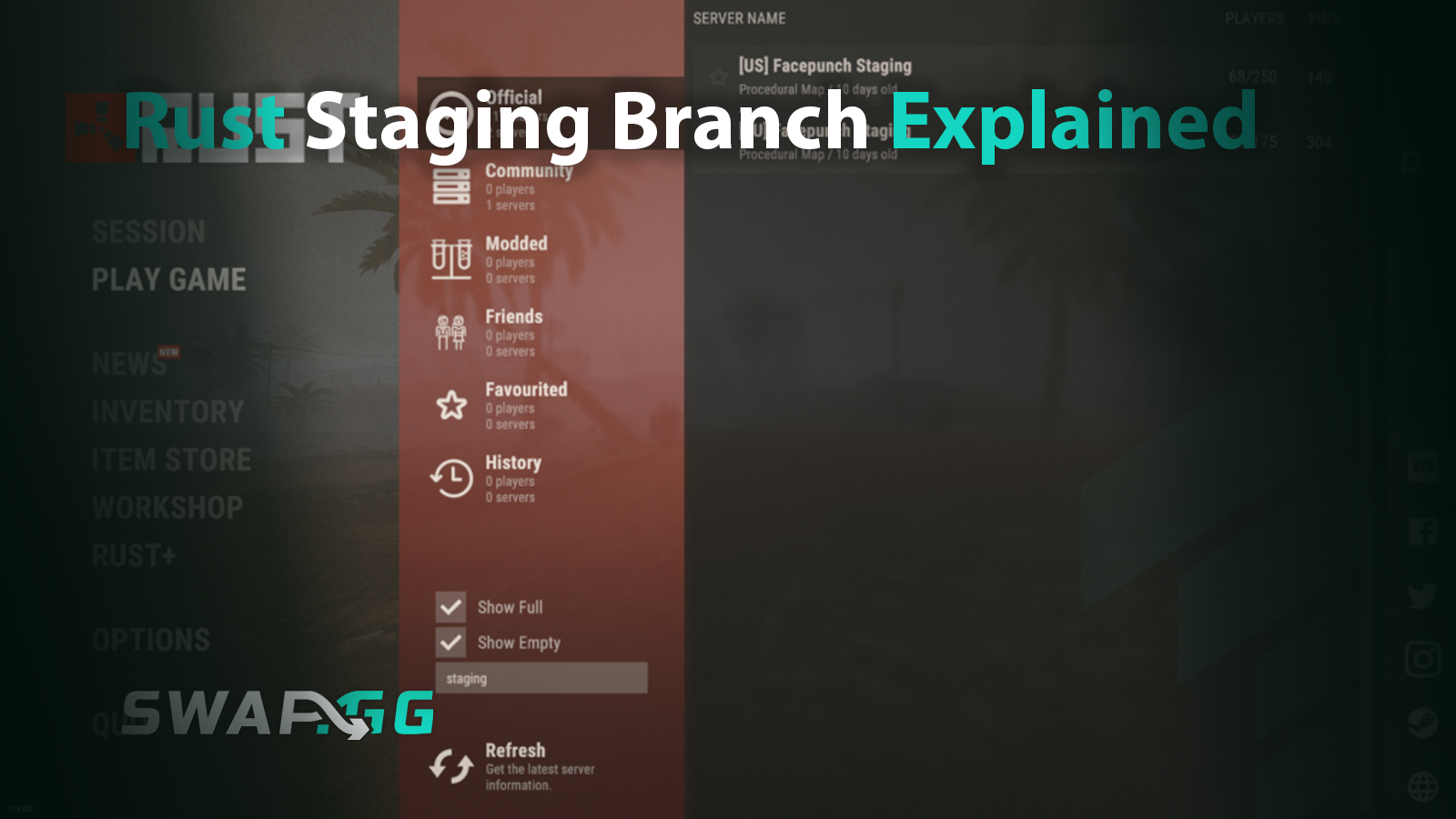Rust Staging Branch Explained: Everything You Need to Know

Опубликовано в Rust

Rust has always thrived as a multiplayer survival game that constantly evolves. From its origins as a simple sandbox to its current state as a complex, player-driven world, the game’s ongoing development is shaped by rigorous testing and community involvement.
Central to this process is the Rust Staging Branch—a dedicated environment where new ideas are trialed, refined, and prepared for release. For players interested in the inner workings of Rust’s development, the Staging Branch offers a unique window into the future of the game, as well as a chance to contribute to its ongoing evolution.
What Is the Rust Staging Branch?
The Rust Staging Branch is a separate build of the game that runs alongside the main version. Its primary purpose is to serve as a testing ground for upcoming features, balance changes, and bug fixes before they are released to the wider player base. Here, developers introduce new content—such as weapons, building mechanics, or environmental updates—in their earliest, most experimental forms. This allows both developers and players to identify bugs, fine-tune mechanics, and gather valuable feedback before updates go live.
How Does the Staging Branch Work?
Anyone who owns Rust on Steam can access the Staging Branch; it appears as a separate entry in your Steam library and can be installed just like any other game. Once launched, the Staging Branch looks similar to the main game but contains features and changes that haven’t yet been fully tested or finalized. Players can join official or community-hosted staging servers, where progress is temporary and frequent wipes or resets are common.
This environment is intentionally unstable, with regular updates and the potential for bugs or crashes, making it ideal for those eager to preview and help shape new content.
Why Play on the Staging Branch?
Participating in the Rust Staging Branch gives players early access to experimental features and a direct role in Rust’s development. By testing new mechanics and reporting issues, players help ensure that future updates are stable and well-balanced.
While the experience can be unpredictable, it offers a unique opportunity for those interested in the evolution of Rust to see—and influence—what’s coming next.
How to Access and Play the Rust Staging Branch
Accessing the staging branch is straightforward, but it’s not for the faint of heart. Here’s what you need to know:
- Platform Requirements: The staging branch is only available on PC via Steam. Console players currently can’t access it due to platform limitations.
- Opting In: To switch to the staging branch, simply install Rust - Staging Branch from your library, and click on "Play" once installed.
- Understanding the Risks: The staging branch is inherently unstable. Expect frequent crashes, incomplete features, and occasional data loss. Progress made here, like inventory or base builds, doesn’t carry over to the main game, so treat it as a disposable experience.
While casual players might find the instability frustrating, dedicated fans, modders, and aspiring developers often see value in participating. If you’re passionate about Rust’s growth and enjoy troubleshooting, this branch could be your gateway to influencing its next big update.
Key Differences: Rust vs. Rust Staging Branch
Why the Staging Branch Matters for Rust’s Future
The Staging Branch is a crucial part of Rust’s development process, serving as the first stop for all new updates before they reach the main game. Facepunch Studios uses this separate version to introduce new features, mechanics, and fixes, allowing both developers and players to identify bugs, glitches, and balance issues in a controlled environment. By participating in the Staging Branch, players can experience upcoming content ahead of official release and provide valuable feedback that helps refine updates for everyone.
For Rust, this model ensures that updates are tested in real-world scenarios, reducing the risk of game-breaking bugs making it to live servers. The Staging Branch operates on independent servers, so any progress or changes here do not affect the main game, and frequent wipes are common to maintain a clean testing environment. This approach allows developers to experiment with new ideas and make adjustments based on player input, leading to a more stable and polished final release.
As Rust continues to evolve, the Staging Branch remains an essential tool for balancing innovation with stability, giving both the development team and the community a direct role in shaping the game’s future.
Conclusion
The Rust Staging Branch is more than just a testing ground; it’s a bridge between developers and players, a space where the future of the game is collaboratively shaped. While its instability and unfinished features might deter casual players, it offers a unique opportunity for enthusiasts to influence Rust’s trajectory. Whether you’re a hardcore fan eager to break new systems or a developer curious about the game’s inner workings, the staging branch provides a glimpse into the ever-changing landscape of survival gaming.
Опубликовано в Rust
![[THUMBNAIL] Is 7.1 Surround Good for CS2? The Reality Behind Virtual Audio](https://swap.gg/cdn-cgi/image/f=auto/https://blog.swap.gg/content/images/2025/12/Is-7.1-Surround-Good-for-CS2_.png)
![[THUMBNAIL] Is CS2 CPU or GPU-intensive? What Hardware Actually Matters](https://swap.gg/cdn-cgi/image/f=auto/https://blog.swap.gg/content/images/2025/12/Is-CS2-CPU-or-GPU-intensive_.png)
![[THUMBNAIL] What Is the Cheapest Knife in CS2? Your Complete Budget Guide](https://swap.gg/cdn-cgi/image/f=auto/https://blog.swap.gg/content/images/2025/12/cheapest-knives.png)